CHAPTER 4
Guilt and Remorse
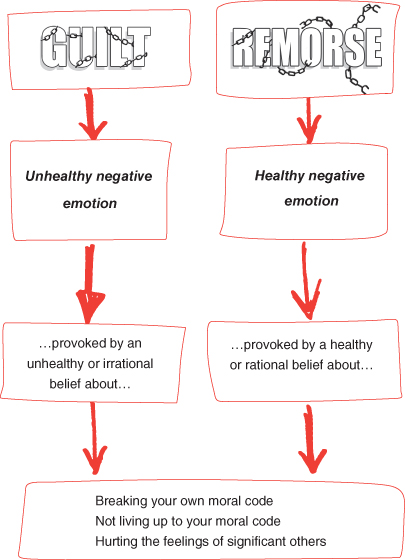
We will focus on some common issues that we’ve observed in our private practice regarding guilt.
Guilt
Guilt is an unhealthy negative emotion. We have all experienced it. If you hold unhealthy beliefs about moral rules and you act against them, then you will feel guilt. Generally speaking, guilt is experienced silently and often no one knows you are experiencing it. It is about you thinking that you have committed a sin, so to speak, but with the following mindset:
When you feel guilt, you accept responsibility for your ‘morally’ wrong deed. This is not a bad thing to do but then you go on to judge yourself in a harsh way without considering the circumstances under which the ‘sin’ was committed. Taking responsibility in this way becomes self blame.
Remorse, on the other hand, is triggered by the following mindset:
With remorse, responsibility is accepted but without self damning. When you feel remorse you accept your imperfection and look for ways to make amends. This does not mean letting yourself off the hook. It simply means that in most situations, but not all, there are some external stressors that need to be taken into consideration to be balanced and fair.
For example, you may feel guilt if you did not visit a friend in hospital more than once but you do not take into consideration that you were working extremely long hours because of important deadlines. Remorse takes such external factors into consideration.
There are times when you may not be able to make amends or even ask the person you have wronged for forgiveness. This may be due to death or the other person cutting all contact with you. If you are experiencing this or something similar then you will need to forgive yourself. No one is perfect and we all make mistakes. It is important to learn from such an experience and accept your fallibility in order to heal yourself from the guilt feeling.
Guilt can be experienced about specific actions or lack of actions; it can also be experienced and is sometimes known as ‘existential guilt’ when you become aware of a discrepancy between your well-being and the well-being of others. For example, ‘I am bad because I’m better off than my brother, and I absolutely shouldn’t be’.
We generally gain our moral compass from family, religion, the cultures and the societies we live in. If we transgress our moral codes and we hold rigid views about them, then we will feel guilt.
Common Guilt Triggers
The following are common triggers of guilt – the list is not exhaustive. Tick the boxes that you think apply to you.
| Tick the box to identify your guilt triggers |
 Doing something wrong Doing something wrong |
 Letting someone significant down Letting someone significant down |
 Keeping secrets Keeping secrets |
 Secretive behaviour Secretive behaviour |
 Thinking about what you have done wrong Thinking about what you have done wrong |
 Feeling angry towards someone Feeling angry towards someone |
 Being reminded of a past bad behaviour Being reminded of a past bad behaviour |
 Hurting someone you care about Hurting someone you care about |
 Breaking your moral code Breaking your moral code |
 Committing a sin Committing a sin |
 Telling lies Telling lies |
 Being late consistently and feeling guilty about
it Being late consistently and feeling guilty about
it |
 Laughing at someone else’s misfortune Laughing at someone else’s misfortune |
 Losing connection with significant others Losing connection with significant others |
 Failure Failure |
 Not behaving responsibly Not behaving responsibly |
 Infidelity Infidelity |
 Feeling pleasure including sexual pleasure Feeling pleasure including sexual pleasure |
 Being happy or having a feeling of
well-being Being happy or having a feeling of
well-being |
 Having a helper, e.g. cleaner, gardener etc. Having a helper, e.g. cleaner, gardener etc. |
 Spending money or purchasing something Spending money or purchasing something |
 Flirting Flirting |
 Thinking about a sin or fantasising Thinking about a sin or fantasising |
 Other (write your own reason) Other (write your own reason) |
Am I Feeling Guilt or Remorse?
Guilt is provoked by unhealthy beliefs about the fact you have gone against your moral code or hurt a significant other in your life.
Such unhealthy beliefs not only provoke guilt but they have a consequence on how you think (cognitive consequences) and also impact on what you feel like doing (action tendencies). When you feel guilt, for example, your thoughts may be preoccupied with ‘I’m a bad person’ and you will feel like punishing yourself.
Assess if you are feeling guilt or remorse by checking your cognitive consequences and action tendencies.
Look through the illustrations for the cognitive consequences and action tendencies and work out if you are feeling guilt or remorse. It is important to put yourself in the trigger situation when you feel guilt. It is easy to think that you don’t have unhealthy beliefs and thoughts when you are not triggered or when you are not thinking about your transgression. Imagine yourself in the situation or in the mindset that triggered your feelings, then work out if your feelings are healthy or unhealthy, i.e. guilt or remorse.
Cognitive Consequences
Guilt
You assume that you have definitely committed the sin.

Cognitive Consequences
Remorse
You consider your behaviour in context and with understanding in making final judgement concerning whether you have actually sinned.
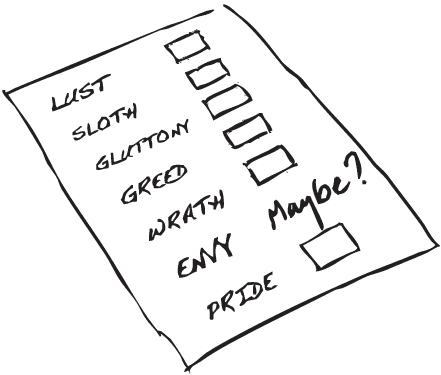
Cognitive Consequences
Guilt
You assume more personal responsibility than the situation warrants.

Cognitive Consequences
Remorse
You assume an appropriate level of personal responsibility.
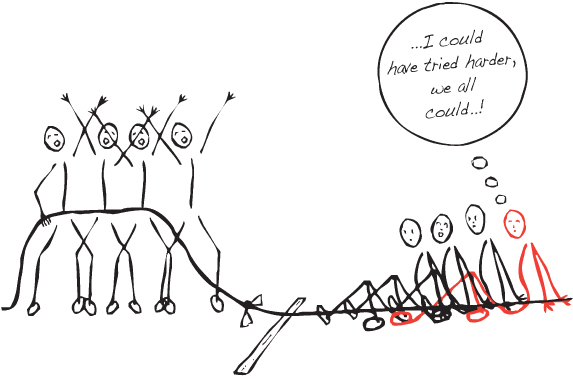
Cognitive Consequences
Guilt
You assign far less responsibility to others than is warranted.
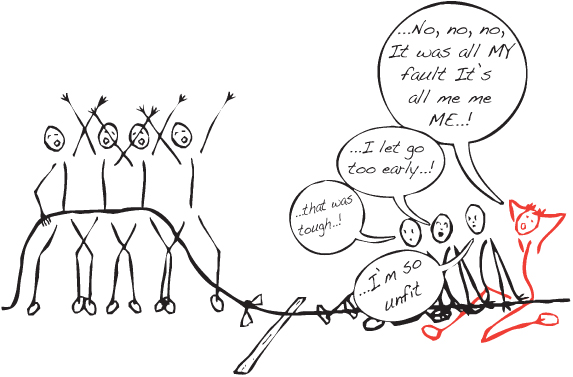
Cognitive Consequences
Remorse
You assign the appropriate level of responsibility to others.

Cognitive Consequences
Guilt
You do not think of mitigating factors.
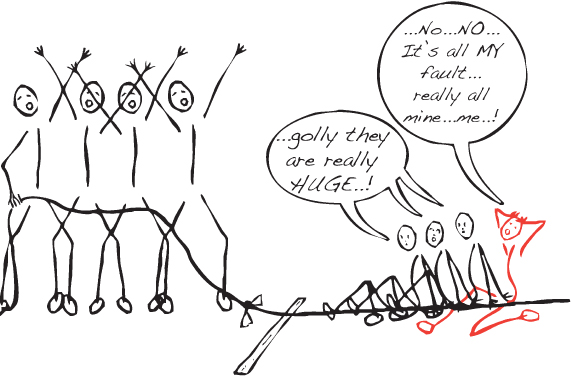
Cognitive Consequences
Remorse
You take into account mitigating factors.
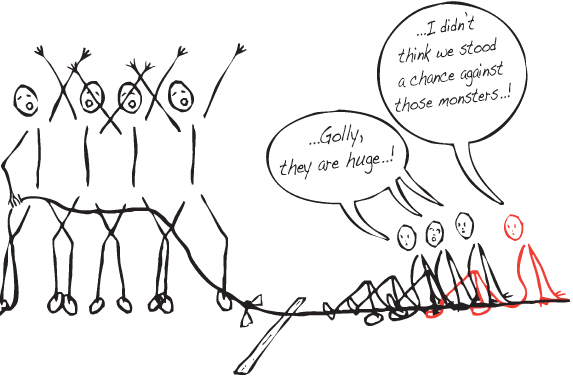
Cognitive Consequences
Guilt
You think that you will receive retribution.

Cognitive Consequences
Remorse
You do not think you will receive retribution.
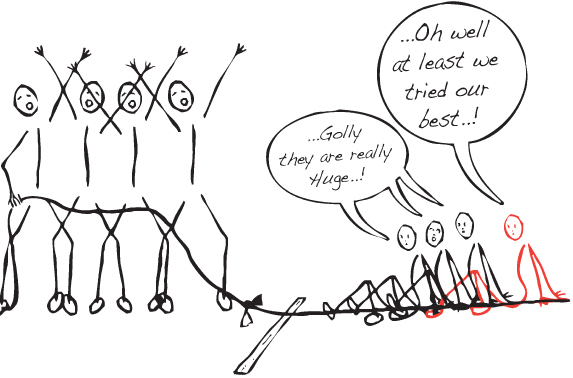
Action/Action Tendencies
Guilt
You try to escape from the unhealthy pain of guilt in self defeating ways.
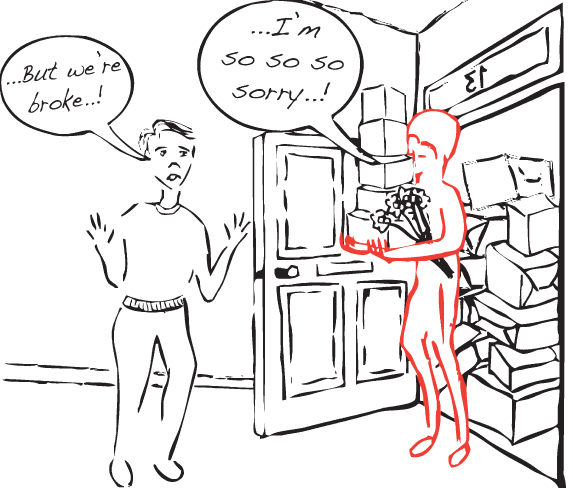
Action/Action Tendencies
Remorse
You face up to the healthy pain that accompanies the realisation that you have sinned.
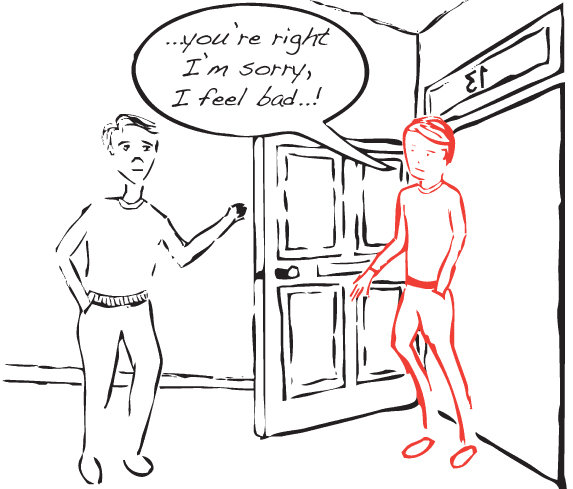
Action/Action Tendencies
Guilt
You beg for forgiveness from the person involved.
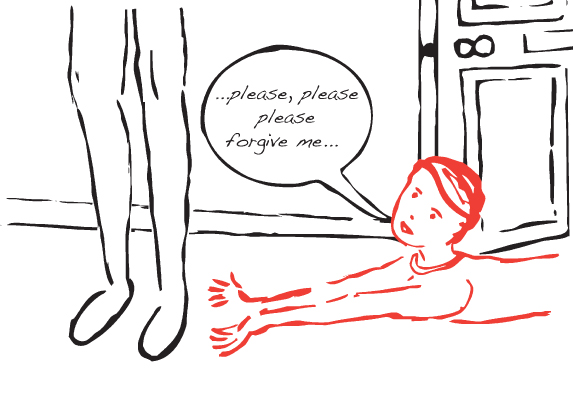
Action/Action Tendencies
Remorse
You ask but do not beg for forgiveness.
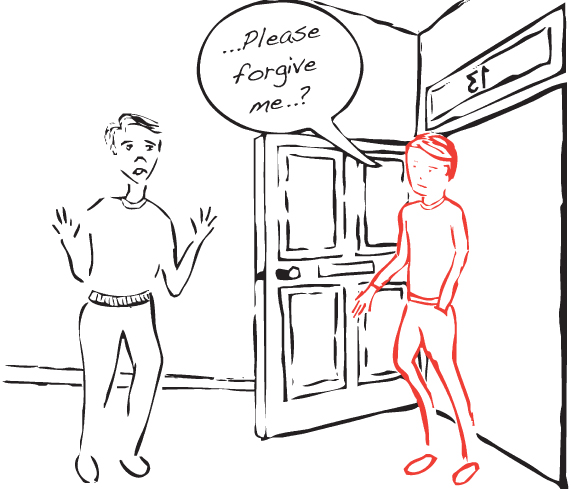
Action/Action Tendencies
Guilt
You promise unrealistically that you will never sin again.
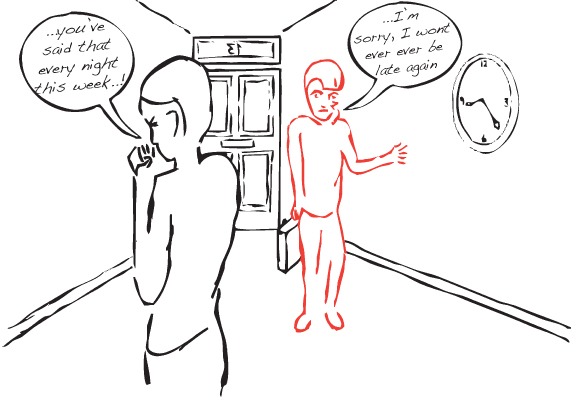
Action/Action Tendencies
Remorse
You understand reasons for wrongdoing and act on your understanding.
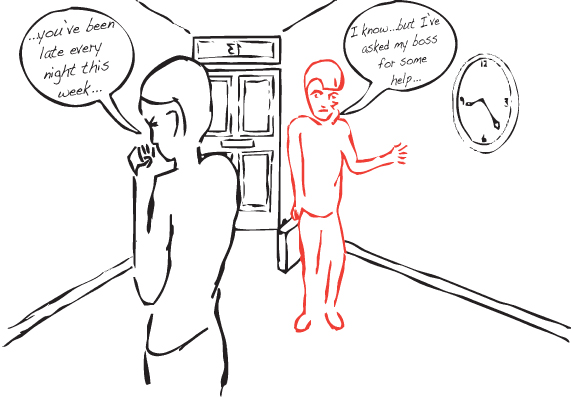
Action/Action Tendencies
Guilt
You punish yourself physically or by deprivation.
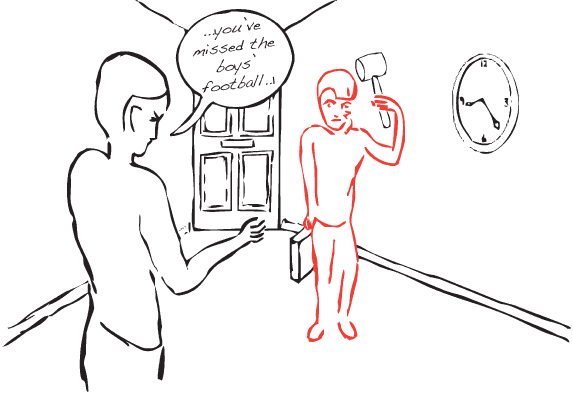
Action/Action Tendencies
Remorse
You atone for the sin by taking a penalty.
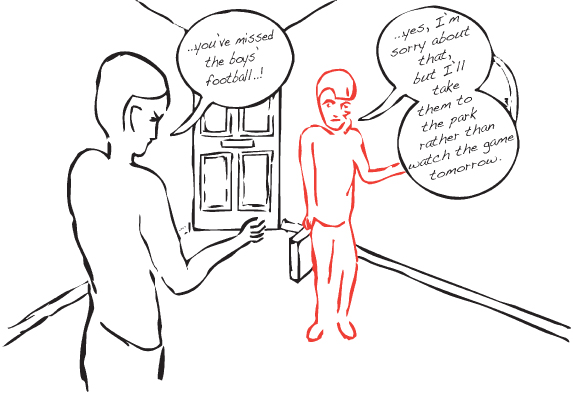
Action/Action Tendencies
Guilt
You disclaim responsibility for your wrongdoing.
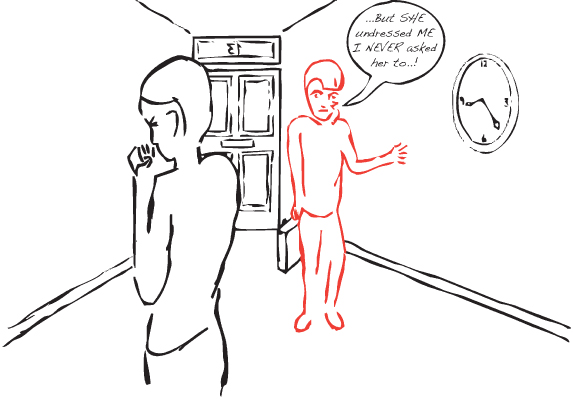
Action/Action Tendencies
Remorse
You make appropriate amends.
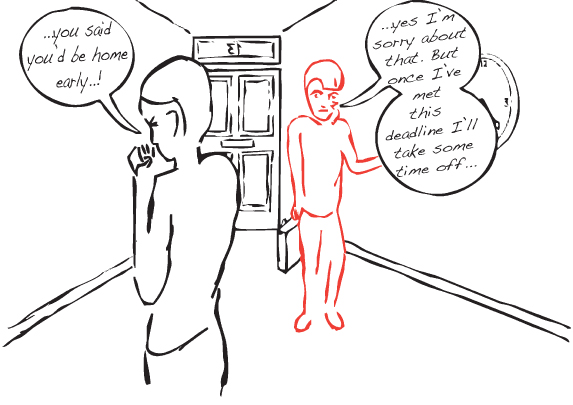
Action/Action Tendencies
Guilt
You have a tendency to make excuses for your behaviour or enact other defensive behaviour.
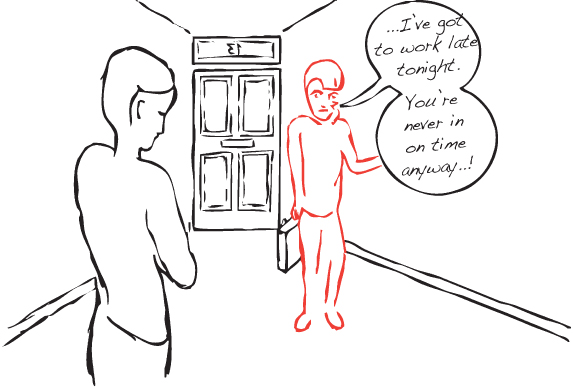
Action/Action Tendencies
Remorse
You have no tendency to make excuses for your behaviour or enact other defensive behaviours.

Now …
General Change or Philosophical Change for you?
General Change

Philosophical Change
Remember to take your time if you are choosing this route, as Philosophical Change is about changing your unhealthy beliefs over the long term.
Remember, guilt is provoked by unhealthy beliefs about violation of, or failure to live up to, your moral codes and about hurting the feelings of a significant other. An unhealthy belief is made up of absolutist rigid beliefs in the form of a MUST, HAVE TO, NEED TO, GOT TO, ABSOLUTELY SHOULD, from which three further derivative disturbed beliefs come.
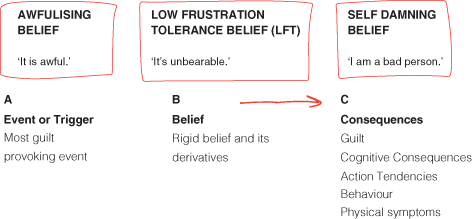
A rigid unhealthy belief, at B, is a demand about the most guilt provoking aspect of an event – it is either a demand for it to absolutely happen or absolutely not happen.
For example, if what you are most guilty about is infidelity, then the rigid belief is I absolutely should have been faithful or I absolutely should not have been unfaithful. If what you are most guilty about is not acting responsibly, then the rigid belief is I absolutely should have acted responsibly. The consequences of not having the rigid belief met are any or a combination of the three derivative beliefs.
For example:

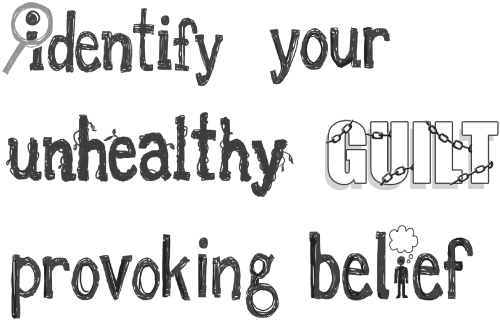
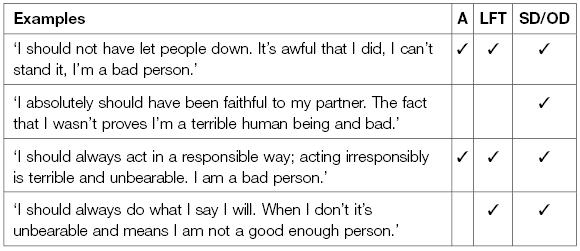
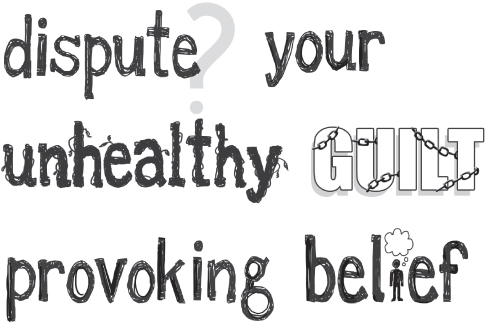
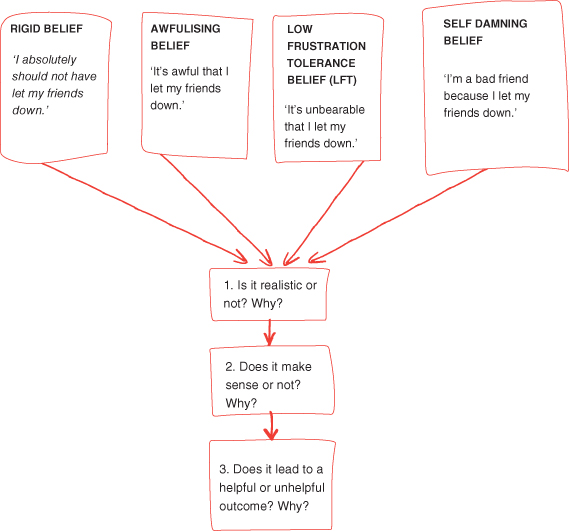

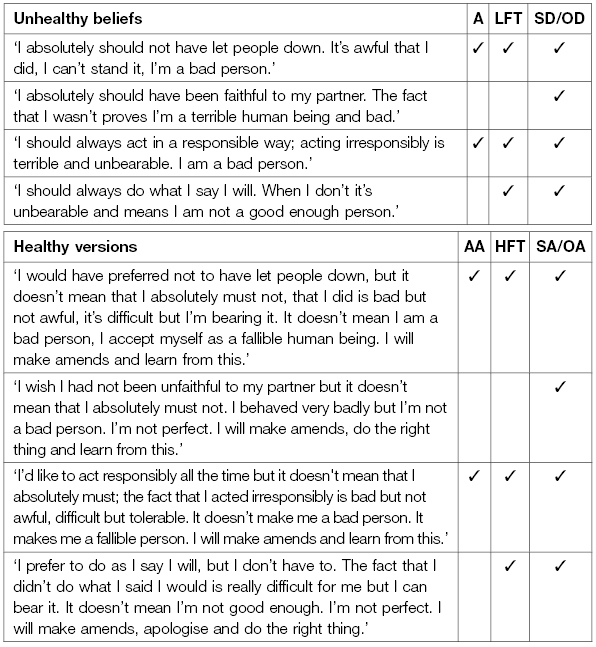
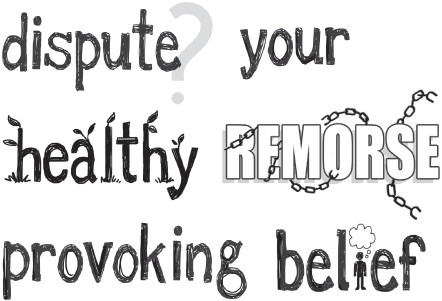
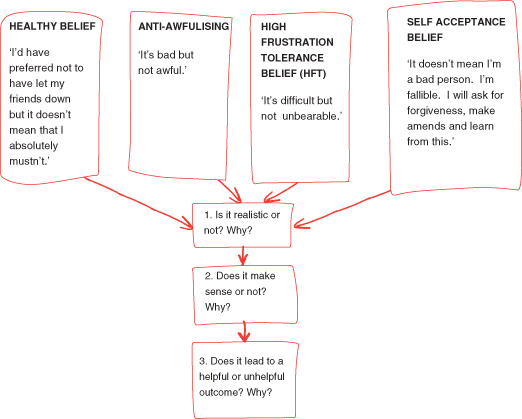
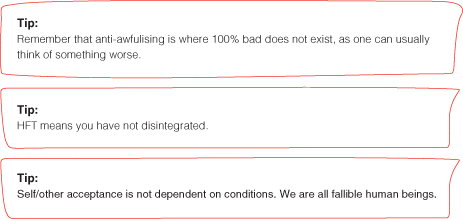
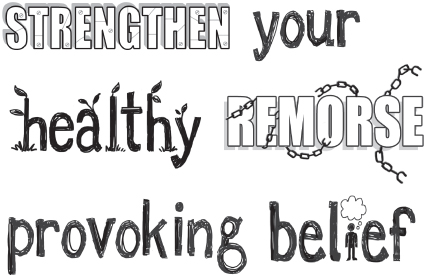

- Think and act in accordance with your healthy belief repeatedly and consistently in a forceful manner until eventually your emotional state changes from guilt to remorse.
- Remember your emotion of guilt will change – the new way of thinking and the new actions you will implement will feel uncomfortable initially but this is completely natural. You are changing an old habit of unhealthy thinking and old habitual guilty behaviours. It takes a few weeks of repetitions done consistently and forcefully.
- The behavioural goals you set for yourself need to be challenging but not overwhelming. If you overwhelm yourself then it defeats the object of the exercise.
- Start with imagining yourself thinking and acting in a healthy manner whilst being in the trigger situation until you think you are ready to challenge yourself in real life. For example, imagining yourself asking for forgiveness or making amends is a good start but at some point you will need to take action and do it.
- Repeat your healthy belief in your head daily and particularly when you are imagining yourself in the trigger situation. This mental rehearsal will help you to remember it when you deliberately face the trigger situation in real life.
- Once you achieve your desired goal, whatever it is, then you need to maintain the helpful thinking and actions. This means keeping the philosophies of remorse alive.
- Review how you did, each time you challenge yourself, and then work out what you can do differently or better the next time. Then do it. Do not demand perfection from yourself. The process of moving from guilt to remorse is uncomfortable and uneven. Some days you will make bigger strides when you challenge yourself and other days you will make small strides or even take a step back. The important thing is to accept that this can happen and then bring your focus back to what you are doing and continue with it.
- Remember, you didn’t learn to drive a car, ride a bicycle or learn to read overnight, it takes repetition and focus and consistency.
Chapter 4 – Guilt – Takeaway Tips
- Become and remain aware of your values and the moral code you wish to apply to your life but don’t hold your values rigidly. No one is perfect.
- Take responsibility for your actions and acknowledge any transgression and then ask for forgiveness, make amends and learn from it.
- If asking for forgiveness or making amends is no longer an option, then forgive yourself and accept that you are a fallible human being who has made a mistake. Learn from it.
- Make self reflection a habit.
- Keep a healthy work–life balance to ensure time for reflection.